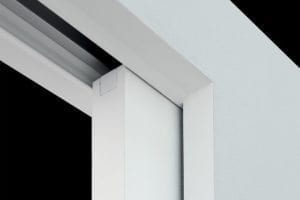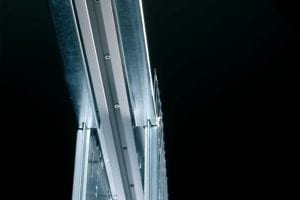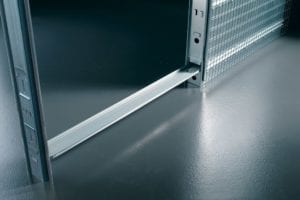A sliding door performs a translational movement which requires a quality mechanism to back it up. Choosing the frame is essential to ensure the smooth operation of the door. Here are three things to know to make the right choice.
Once installed, the frame becomes part of the wall in itself. It must therefore be as strong as the bulkhead. Robustness and reliability are essential. Contrary to popular belief, a fully concealed frame is not stronger than a perforated structure. This is not the steel sheet covering the frame that determines the strength, but the horizontal profiles that compose it.
If the number or the thickness of the webs is not optimal, there is a risk of deformation. The sliding door may rub against the frame of the structure and will not slide correctly.

The sliding system consists of a rail with slide carriages which drive the sliding door. The material and shape of the rail must be excellent to ensure good “slide”. Similarly, ball bearings trolleys provide a sustained movement, unlike the needle bearings which can deteriorate over time.
Thanks to Eclisse frame feature, the rail can be extracted , checked and cleaned at any time. So you can add accessories such as a soft-close or change the path of the door, even after installation.

Installing the frame correctly is fundamental. Installation will influence the quality of the movement. So you must select a frame that facilitates the easer installation phase. For example, the alignment bar creates a rigid link between the profiles – thus the deformation of the frame is avoided. The self-centring door guide prevents errors that can hinder the passage of the door. If the installation work is easier and faster, error margins are reduced.

[subscribe-by-email-form]